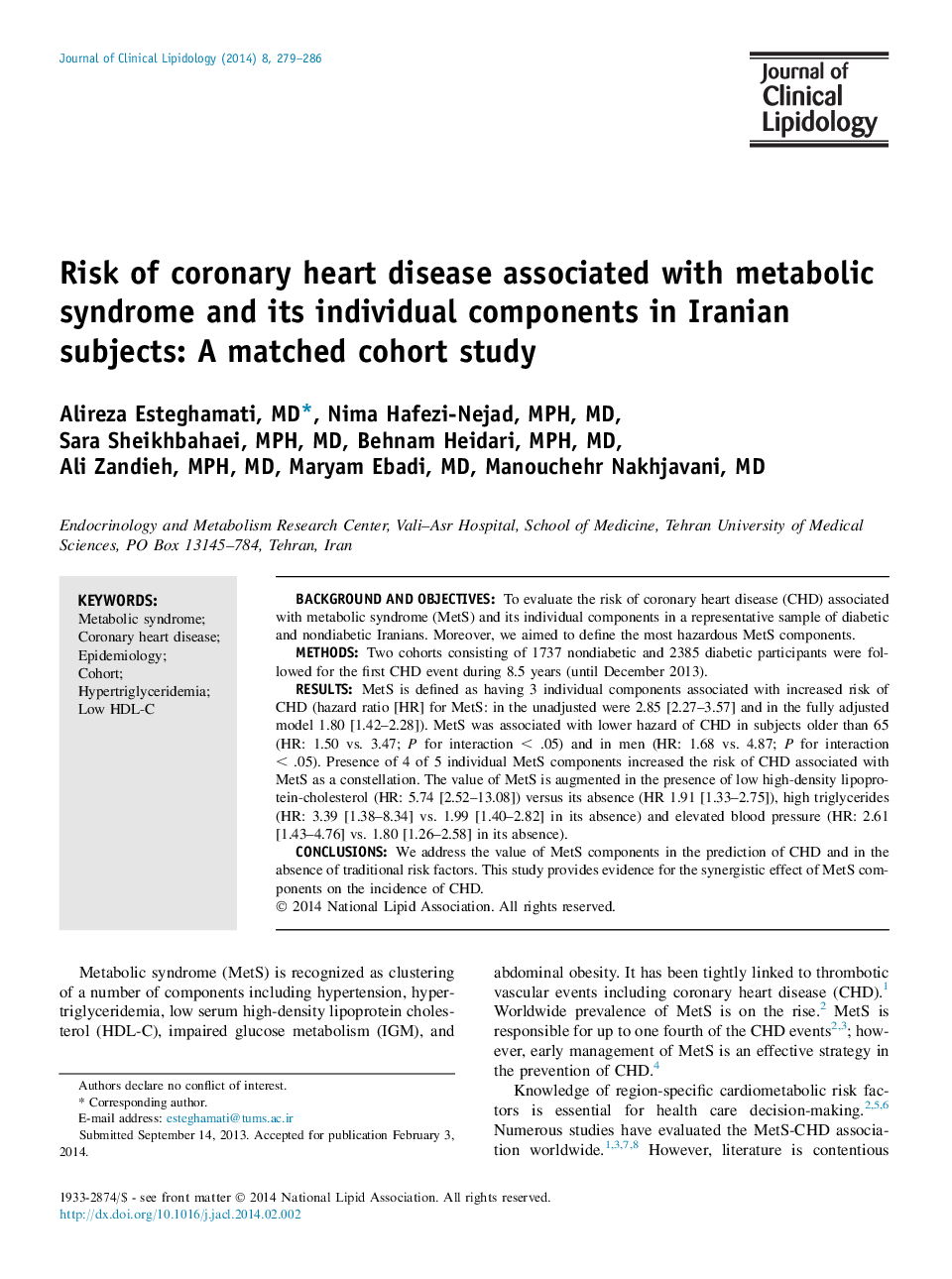| Article ID | Journal | Published Year | Pages | File Type |
|---|---|---|---|---|
| 2966024 | Journal of Clinical Lipidology | 2014 | 8 Pages |
►Subjects with at least 3 MetS components had significantly higher incidence of CHD.►The value of MetS is augmented in the presence of low HDL-C, high TG, and elevated BP, respectively.►This study provides evidence for synergistic effect of MetS components on the incidence of CHD.
Background and ObjectivesTo evaluate the risk of coronary heart disease (CHD) associated with metabolic syndrome (MetS) and its individual components in a representative sample of diabetic and nondiabetic Iranians. Moreover, we aimed to define the most hazardous MetS components.MethodsTwo cohorts consisting of 1737 nondiabetic and 2385 diabetic participants were followed for the first CHD event during 8.5 years (until December 2013).ResultsMetS is defined as having 3 individual components associated with increased risk of CHD (hazard ratio [HR] for MetS: in the unadjusted were 2.85 [2.27–3.57] and in the fully adjusted model 1.80 [1.42–2.28]). MetS was associated with lower hazard of CHD in subjects older than 65 (HR: 1.50 vs. 3.47; P for interaction < .05) and in men (HR: 1.68 vs. 4.87; P for interaction < .05). Presence of 4 of 5 individual MetS components increased the risk of CHD associated with MetS as a constellation. The value of MetS is augmented in the presence of low high-density lipoprotein-cholesterol (HR: 5.74 [2.52–13.08]) versus its absence (HR 1.91 [1.33–2.75]), high triglycerides (HR: 3.39 [1.38–8.34] vs. 1.99 [1.40–2.82] in its absence) and elevated blood pressure (HR: 2.61 [1.43–4.76] vs. 1.80 [1.26–2.58] in its absence).ConclusionsWe address the value of MetS components in the prediction of CHD and in the absence of traditional risk factors. This study provides evidence for the synergistic effect of MetS components on the incidence of CHD.
